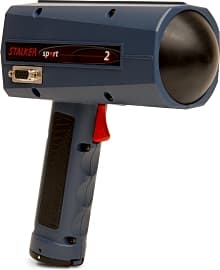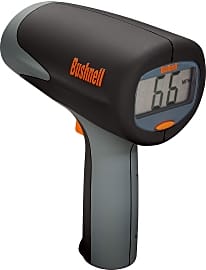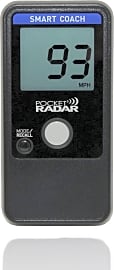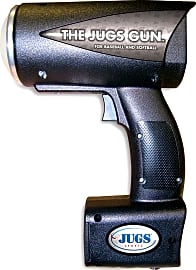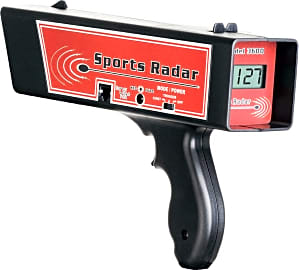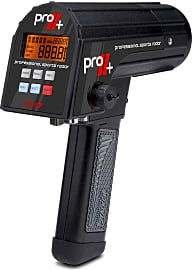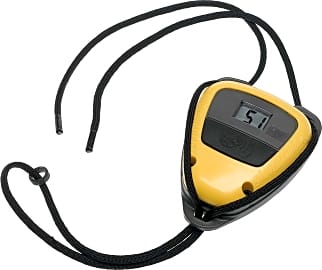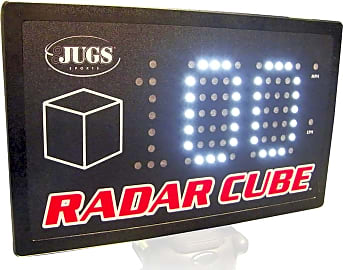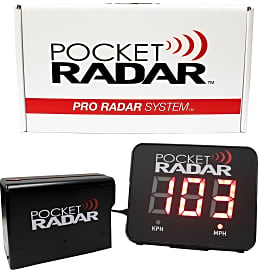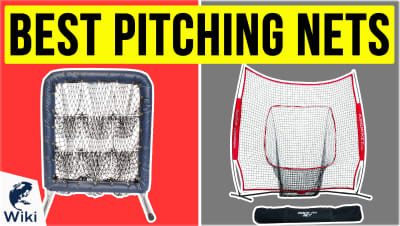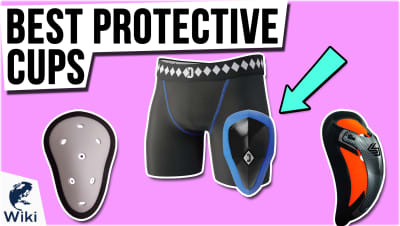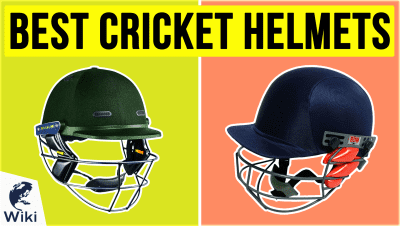The 10 Best Radar Guns

This wiki has been updated 42 times since it was first published in August of 2015. Whether it's for catching neighborhood speeders or improving your fastball, the best evidence is hard numbers. These radar guns will record max speed on pitches, serves, slapshots, or golf drives, and many include advanced features like smartphone connectivity. We've included a variety of mounted models and traditional speed guns to suit everyone from professional scouts to backyard enthusiasts. When users buy our independently chosen editorial picks, we may earn commissions to help fund the Wiki.
Editor's Notes
December 08, 2020:
We've updated our list based on availability, accuracy, and the features that will most benefit users. Radar guns haven't fundamentally changed since their invention, but new technology has made them more accessible and useful. Models like the Pocket Radar Smart Coach and Stalker Pro II + allow users to send data straight to their smartphone, which is a nifty way to track and display your progress.
It's important to choose your speed gun based on your intended use. Most of our picks will work for ball sports, but not all of them are designed to accurately measure the speed of vehicles or runners. Consider the maximum measurement speed as well — if you need to record fast tennis serves, you'll want a model like the Stalker Sport 2, which is accurate up to 150 mph. For baseball, most radar guns will work best when set up behind a pitching net.
Pricier models generally bring better accuracy and greater range. Entry-level models like the Bushnell Velocity work fine for casual use, but scouts and coaches should consider pro-level options like the Jugs Gun. The Pocket Radar Ball Coach is a good middle ground for price and performance.
May 15, 2019:
Removed the Bushnell Speedster III. While it was a low-cost option that made it possible for a wider audience to use radar equipment, the measurements weren't accurate enough to warrant inclusion here. It still may be a worthwhile purchase if precision isn't an issue, however.
In its place we listed another Bushnell model, the Velocity. It's a good starter unit for those with only a casual interest in tracking speed, but it lacks some of the features that made our more highly-ranked selections stand out. Still, you won't pay much for that particular bare-bones machine.
We went back and forth as to how to rank the Pocket Radar Ball Coach and the Stalker Pro II, as they're both excellent at their respective functions. Ultimately, we placed the Ball Coach higher simply because it rivals the Pro II in effectiveness, but at a much more budget-friendly price point. That said, if being exact is important to you and you have plenty of funds available, feel free to flip those rankings if you like. Experts should certainly opt for the Pro II (or something like the Jugs Gun), but casual users should find that the Ball Coach does everything they need it to.
Special Honors
Stalker Radar Pro IIs In sports like baseball and tennis, spin can be just as important as velocity. This impressive (and expensive) handheld model uses patented technology to capture spin rate in addition to speed measurements, and it sends them all to a smartphone app for statistical tracking and analysis. stalker.sport
Understanding The Doppler Effect
It has been applied to everything from meteorological predictions of weather to proximity fuses used in weapons to noninvasive medical imaging of the human body.
If you have ever gotten a speeding ticket, you have the "Doppler Effect" to "thank" for your moving violation. So too can you thank the Doppler Effect for the ability of that Major League Baseball announcer to tell you just how fast that pitcher's last fastball crossed the plate. And if you have ever listened to the growing whine of a vehicle's engine as it drew ever nearer to you and then heard it roar past, only to have the motor's sound descend into a deeper rumble as it drove away, that too is caused by the Doppler Effect.
Also referred to sometimes as the Doppler Shift and named for 19th Century Austrian physicist Christian Doppler, the Doppler Effect relates to the relative -- or perceived -- change in the frequency of a series of waves as an object draws nearer to and then passes by a point of observation. As the object (say for example your speeding car or a thrown baseball) moves closer to the point of observation (a police officer's speed trap or a speed monitoring radar gun at the ballpark, in our examples), the waves emitted by the object are successively closer to the point of observation, thus each wave is closer to its successor than the last. The effect changes the pitch of sound created (thus the ever higher whine of the engine) and allows an observing device at a fixed point to determine the speed of the object based on the ever more rapidly detected waves.
A radar gun emits a radar beam which "bounces" off the object being monitored; it is the increasing frequency with which these beams bounce back and are recorded by the device that lets its user determine an object's speed. The principle behind the Doppler Effect is relatively simple in the greater world of physics, but it is one of the most practically applicable concepts established in modern science. It has been applied to everything from meteorological predictions of weather to proximity fuses used in weapons to noninvasive medical imaging of the human body.
If you're interested in is tracking the speed of a golf ball, baseball, or the cars coming careening down your neighborhood street, you too can make practical and enjoyable use of Christian Doppler's 170 year old concept.
Choosing A Radar Gun For Sports
Before you decide whether or not a radar gun is a good idea for helping you improve your own performance on the golf course or the baseball diamond, or whether or not such a unit will be a good tool for you to use as part of your coaching for the kids or the team, know that these devices aren't exactly cheap. If you're considering a radar gun more for a lark than for serious dedication to improvement, you may want to think twice.
If you're considering a radar gun more for a lark than for serious dedication to improvement, you may want to think twice.
That said, knowing how fast you or your protege is hitting or throwing that ball can speak volumes, and the investment in a radar gun may pay off in terms of improved form, reduced chance for injury, and of course in a faster, better aimed ball. Take a softball pitcher's throw as an example: if a pitcher routinely achieves greater throwing speeds using a certain form, then she gains quantifiably substantiated proof of her best possible technique. This data will allow her to focus on the strength training needed to support this particular type of windup and throw, minimizing the chance for injury and maximizing performance.
Next consider the golfer wondering which iron he should be using for those long fairway drives. If he takes the time to measure enough hits using various clubs, he will likely see a pattern emerge that permits him (or her) to determine the ideal club for each distance. (Remember that while the numbered iron system is a handy guide to driver choice, a player's individual strength and swing style are the ultimate metrics that matter.)
Choosing A Radar Gun For General Use
There are myriad reasons a person might want to use a radar gun that go well beyond the coach tracking his players' fastball or a policeman trying to make a quota by issuing speeding tickets. A radar gun can see practical applications when used on a construction site or in a factory to measure how fast equipment, like a new elevator or an assembly line, are working. The tool can be used to confirm such devices are working properly and can help diagnose an issue when they are not.
Radar guns are also useful for the field researcher, the hunter, or the casual nature watcher trying to determine the speed of an approaching or departing animal.
Radar guns are also useful for the field researcher, the hunter, or the casual nature watcher trying to determine the speed of an approaching or departing animal. (Or you can always use one just for fun to see how fast your own dog or cat can run across the yard or down the hall.)
A radar gun can also be useful for the private citizen who wants to determine how fast traffic is moving down his or her street. If you think your neighbors or the people cutting through your neighborhood routinely drive too fast, a radar gun can help you confirm your suspicions empirically before you go to the authorities with a request for formal action. A radar gun can also help you monitor the activity of the new teenage driver in your family, letting you clamp down on the rules if your youngster is being reckless behind the wheel.


